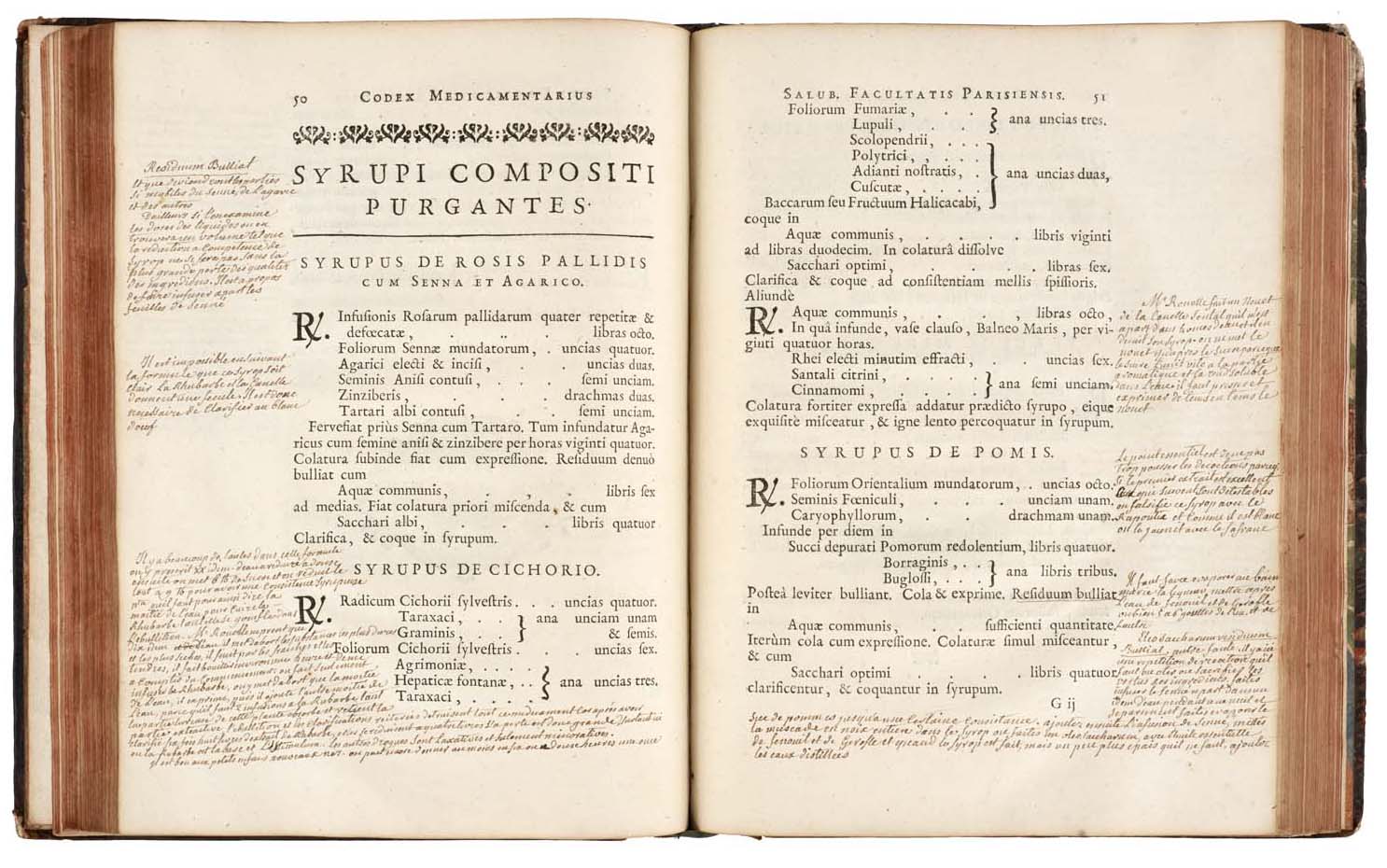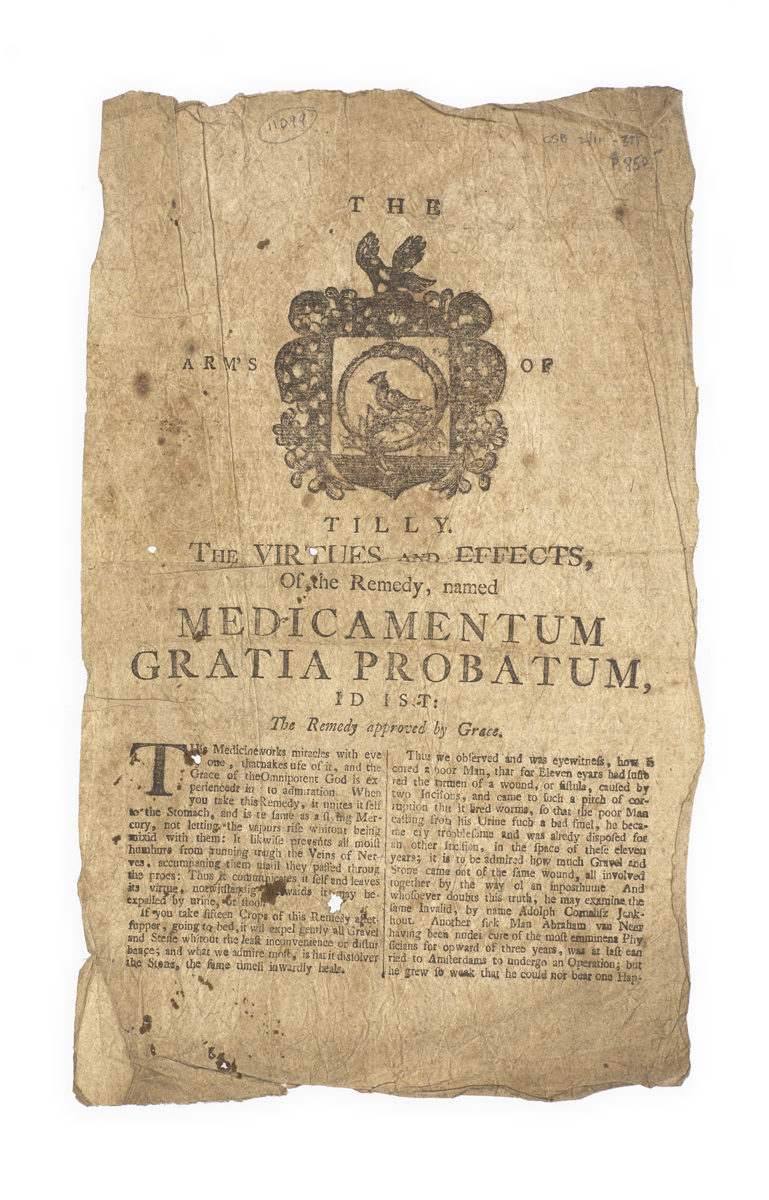

ANNOTATED BY A PRACTISING PHARMACIST
MARTINENQ, Jean Baptiste Thomas.
Codex medicamentarius, seu pharmacopoea Parisiensis, ex mandato facultatis medicinae Parisiensis in lucem edita, M. Joanne-Baptista-Thoma Martinenq, decano. Editio auctior et emendatior.
Paris, apud Guillelmum Cavelier, 1748.
4to, pp. [16], cxxxii, 268, xxxiv, [6]; engraved initials, head- and tail-pieces; marginal damp stain to first few leaves; very good in contemporary mottled calf, spine gilt in compartments with lettering-piece, red edges, marbled endpapers; upper joint split but firm, some wear to corners, a few abrasions and marks to boards; extensive near contemporary marginal ink annotations in French to pp. 19-186.

Added to your basket:
Codex medicamentarius, seu pharmacopoea Parisiensis, ex mandato facultatis medicinae Parisiensis in lucem edita, M. Joanne-Baptista-Thoma Martinenq, decano. Editio auctior et emendatior.
Revised and enlarged edition (first 1638) of the Parisian pharmacopoeia, edited by the dean of the faculty of medicine at the University of Paris, Jean Baptiste Thomas Martinenq (d. 1758), this copy greatly enhanced by extensive critical and analytical marginalia by an experienced near contemporary medical practitioner.
Following a thorough index of medicinal ingredients, the body of the text provides recipes for, inter alia, simples, potions, vinegars, syrups, powders, electuaries, tablets and pills, oils, plasters, distillations and spirits, and salts. Lists of doctors at the faculty of medicine and of Parisian pharmacists are also provided.
The marginal annotations in this copy add great value to the bare bones of the recipes by providing a rare insight into eighteenth-century usage of such pharmacopoeia. The unnamed annotator was clearly an experienced pharmacist: his notes are based on his own, evidently considerable practice and were perhaps intended for teaching purposes. He recommends the inclusion or exclusion of ingredients and discusses their virtues, proposes adjustments to the recommended measures and doses, gives revised methods of composition, and notes the medical uses to which recipes should be put.
The annotator praises some recipes (e.g. ‘la formule est bien’; ‘ce beaume est très bien dosé’; ‘si vous avez bien suivi ce procedé votre syrop gardé a la cave sera bon au bout de 20 ans’) but is critical of several others. He objects to the use of stag horn and human skull in pulvis antispasmodicus, dismisses the use of pearls in another powder as expensive and ineffectual, and describes the recipe for theriac as a ‘hochepot monstrueux’. His outlook is not confined to France: his note on theriaca coelestis remarks that ‘elle a produit de grands effets au missisipi’; he refers to German and English practice regarding mercury pills; and he warns against Morton’s pills, stating that ‘les ouvrages de Morton sont une lecture dangereuse’.
The notes contain several mentions of ‘Mr Rouelle’, presumably the chemist and apothecary Guillaume-François Rouelle (1703–1770), whose pupils included Diderot, Lavoisier, and Parmentier.
Wellcome IV, p. 368.

